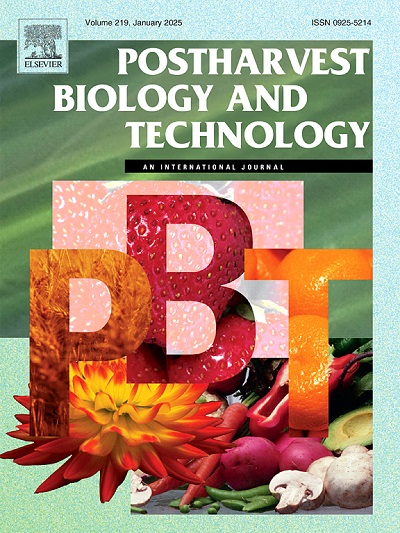鲜切辣椒(Capsicum annuum L.)受肠杆菌感染后细胞壁多糖和 ROS 代谢变化的启示
IF 6.4
1区 农林科学
Q1 AGRONOMY
引用次数: 0
摘要
本文章由计算机程序翻译,如有差异,请以英文原文为准。
Insights into the changes in cell wall polysaccharides and ROS metabolism of fresh-cut chili pepper (Capsicum annuum L.) infected by Enterobacter cloacae
Enterobacter cloacae, a typical spoilage bacterium, causes severe textural softening of freshly cut chili pepper. This study investigated the mechanisms of E. cloacae-induced textural softening involving cell wall polysaccharide disassembly and reactive oxygen species (ROS) production. It was found that E. cloacae-inoculated samples had lower firmness and greater weight loss than the control group. Meanwhile, E. cloacae inoculation promoted cell wall decomposition; cell wall polysaccharide disassembly, such as cellulose and Na2CO3-soluble pectin; and enhanced cell wall-degrading enzyme (CWDE) activity (polygalacturonase, pectin methylase, pectin lyase, β-galactosidase, α-L-arabinofuranosidase, cellulase, and xyloglucan endotransglycosylase). Furthermore, high H2O2 content, low GSH content, and reduced activities of superoxide dismutase, catalase, and ascorbate peroxidase were found in the E. cloacae-inoculated group during late storage. Overall, E. cloacae-induced textural softening of fresh-cut chili peppers resulted from cell-wall polysaccharide degradation due to increased CWDE activity, ROS accumulation, and reduced ROS-scavenging capacity.
求助全文
通过发布文献求助,成功后即可免费获取论文全文。
去求助
来源期刊

Postharvest Biology and Technology
农林科学-农艺学
CiteScore
12.00
自引率
11.40%
发文量
309
审稿时长
38 days
期刊介绍:
The journal is devoted exclusively to the publication of original papers, review articles and frontiers articles on biological and technological postharvest research. This includes the areas of postharvest storage, treatments and underpinning mechanisms, quality evaluation, packaging, handling and distribution of fresh horticultural crops including fruit, vegetables, flowers and nuts, but excluding grains, seeds and forages.
Papers reporting novel insights from fundamental and interdisciplinary research will be particularly encouraged. These disciplines include systems biology, bioinformatics, entomology, plant physiology, plant pathology, (bio)chemistry, engineering, modelling, and technologies for nondestructive testing.
Manuscripts on fresh food crops that will be further processed after postharvest storage, or on food processes beyond refrigeration, packaging and minimal processing will not be considered.
 求助内容:
求助内容: 应助结果提醒方式:
应助结果提醒方式:


